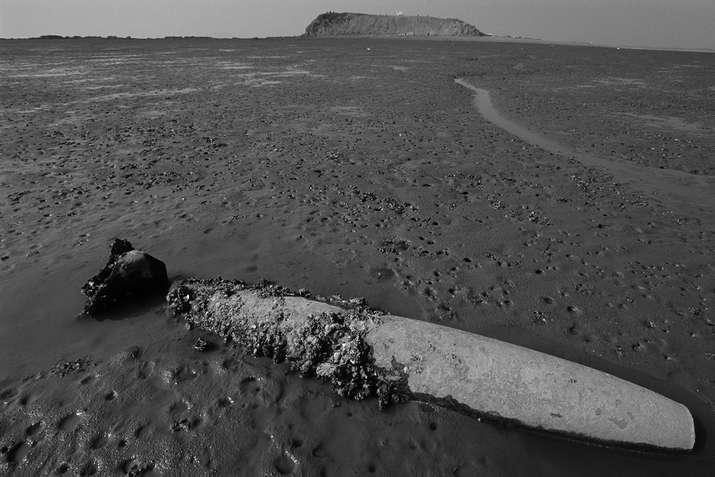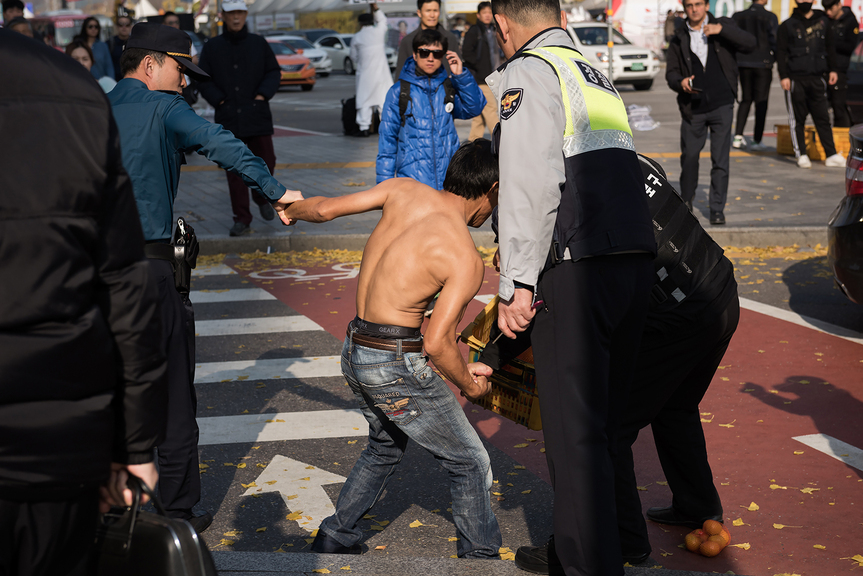-
From Current Issue
-
- Editor’s Letter Fire in the Heart
- Reviews I Gusti Ayu Kadek Murniasih
- Reviews 11th Seoul Mediacity Biennale: “One Escape at a Time”
- Dispatch Networked China
- One on One Monira Al Qadiri on Yukio Mishima
- Essays The rise of independent art spaces in pandemic-era Shanghai
- Features Tuan Andrew Nguyen
- Table of Contents
- Web Exclusives
- Archive
- Subscribe

R
E
V N
E
X
T
Installation view of NOH SUNTAG’s “The 4th Wall: State of Emergency II” at Art Sonje Center, Seoul, 2017. Photo by the artist. Courtesy the artist and Art Sonje Center.
Nine years have passed since Korean artist Noh Suntag’s previous solo exhibition, “State of Emergency I,” was shown at Württembergischer Kunstverein in Stuttgart, Germany. Its sequel, “The 4th Wall: State of Emergency II” at Seoul’s Art Sonje Center, continues to tackle the South Korean government’s abuse of power. “State of emergency” is a term coined by German theorist Carl Schmitt in 1921; it describes urgent circumstances that allow the government to act without constitutional agreement. Noh’s background in political studies and photography equipped the Seoul-based artist with the know-how to condense nine years of upheaval in Korea into his art.
In Art Sonje’s exhibiting space, an array of photographs from the 12 series that made up the exhibition was mounted on the walls. In the center, select photographs from each series were mounted at the same height, and attached to multiple stainless steel rods. These captured moments present Noh’s documentation of the disputes that primarily took place in the military base camps across South Korean coastal islands. The works, however, do not specify where and why the incidents occurred, with the lack of textual information adding to the sense of mystery. These images of photographers, the police force and protesters—which are arranged in chronological order—weave together the turmoil experienced from Jeju Island to Yeonpyeong Island, Incheon, over the last decade into a singular event.
“Wrong Island” (2000) references scenes from the former US army’s testing field in the western coastal village of Maehyang-ri, Gyeonggi-do. These black-and-white photographs show US military aircraft flying across the sea or to the neighboring island, and a tussle between residents and the police; though presented in the style of historical documentation, it is difficult to put a timestamp on the images. Wrong Island #BAH0602 (2000) is a hazy picture, showing the firing of shots from a neighboring island in the distance, white smoke trailing from the small island like a gloomy firework.
Another series “Deadpan of Cheonanham” (2010) depicts the aftermath of the North Korean surprise attack on South Korean warship Cheonan. The ship split into two and sank in the Yellow Sea near Incheon, leaving 46 people dead. In Deadpan of Cheonanham #CAE0301 (2010), the camera follows a search committee for the submerged Cheonan among rocky reefs. Treatment as such reflects Noh’s portrayal of North and South Korea as both actors and audience in an absurd play.
NOH SUNTAG, Drought #CFL1402, 2015, inkjet pigment print, dimensions variable. Courtesy the artist and Art Sonje Center, Seoul.
The second part of the exhibition, on level three, was displayed under dim light. The bulbs on the ceiling emitted beams of luminescence, evoking an atmosphere reminiscent of the candlelight protests that took place before the impeachment of ex-president Park Geun-hye in recent months. “A Chignon Mountain Raised by Lies” (2016–17) is a record of mass demonstrations that called for the impeachment of Park in Gwanghwamun Square, a 20,000-square-meter public space in the center of Seoul. This series features photographs of stitches sewn along the political figures’ throats that are mounted on the tents of the protest camps, swarms of little lights from a bird’s eye view, and placards prompting Park’s resignation. “Drought” (2008–15) features close-up color photographs of a single water cannon lit theatrically against a stark black background; Drought #CFF0122 (2015), for example, features a pointed nozzle possessing a striking persona under cinematic illumination.
“Vertigo” (2009–17) is a collection of images of “high-wire protests” in the literal sense of the phrase: demonstrations by workers taking place on top of buildings, cranes and billboards to protect their rights with by imposing a physical presence. Rather than depicting the high altitudes, however, the photograph shows us a close-up of the upper part of the structure. Vertigo I #BJF1701 (2009), a black-and-white image of a fired worker locked in a watchtower, corresponds to the image of the sole water cannon: both are emblems of resistance and power. Intertwining stark documentation with the surreal, Noh’s depiction of South Korea and its political landscape is deceptive and fluid.
Noh Suntag’s “The 4th Wall: State of Emergency II” is on view at Art Sonje Center, Seoul until August 6, 2017.
To read more of ArtAsiaPacific’s articles, visit our Digital Library.








